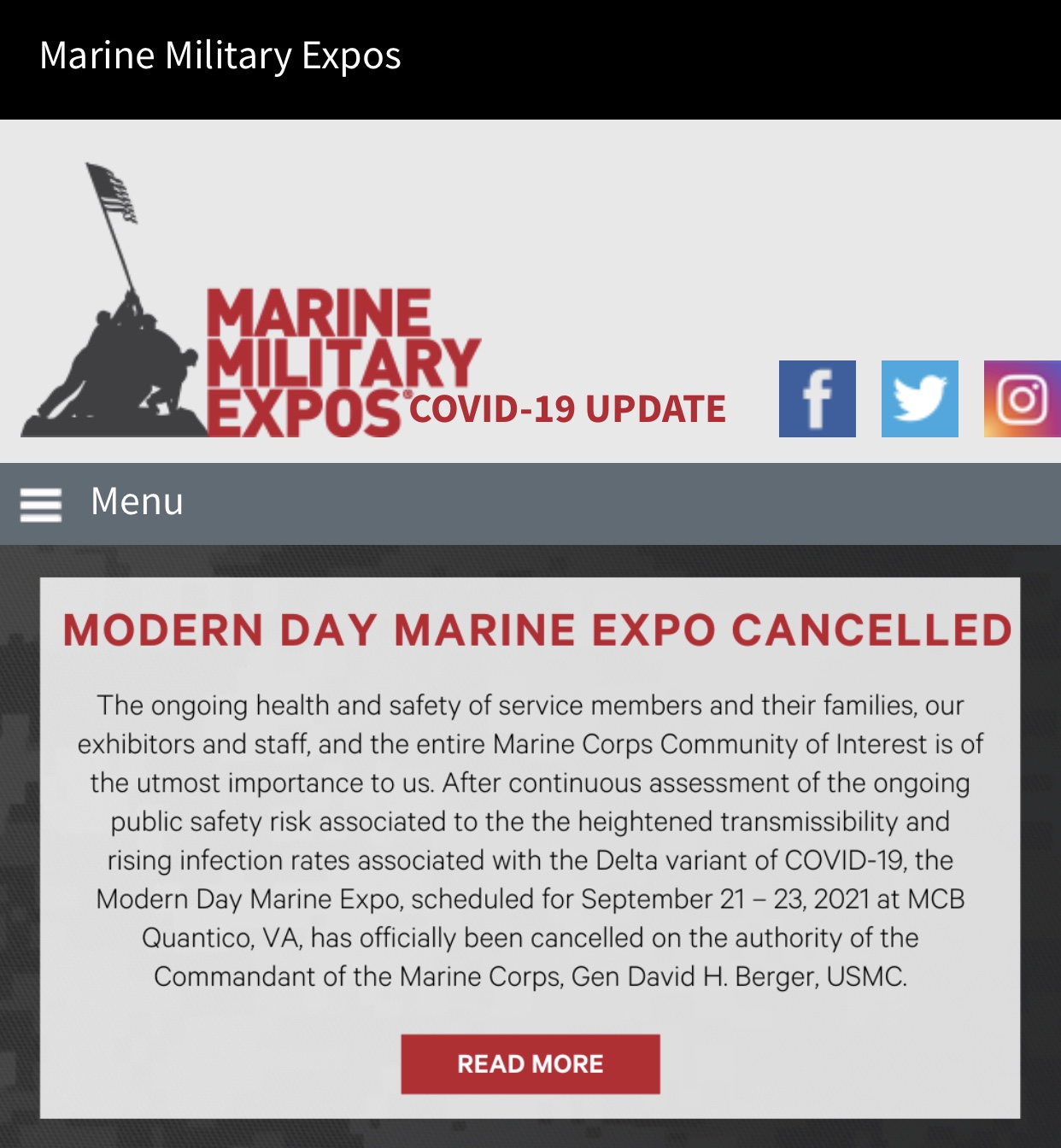
Modern Day Marine has announced the cancellation of the 2021 event scheduled for September 21-23 at the Quantico Marine Corps Base due to COVID-19 concerns.

Modern Day Marine has announced the cancellation of the 2021 event scheduled for September 21-23 at the Quantico Marine Corps Base due to COVID-19 concerns.
KAUAI, Hawaii —
The Navy/Marine Corps Expeditionary Ship Interdiction System successfully hit its target in support of Marine Corps Forces, Pacific, during Large Scale Exercise 21 Aug. 15, 2021. The exercise showcased the U.S. maritime forces’ ability to deliver lethal, integrated all-domain naval power.
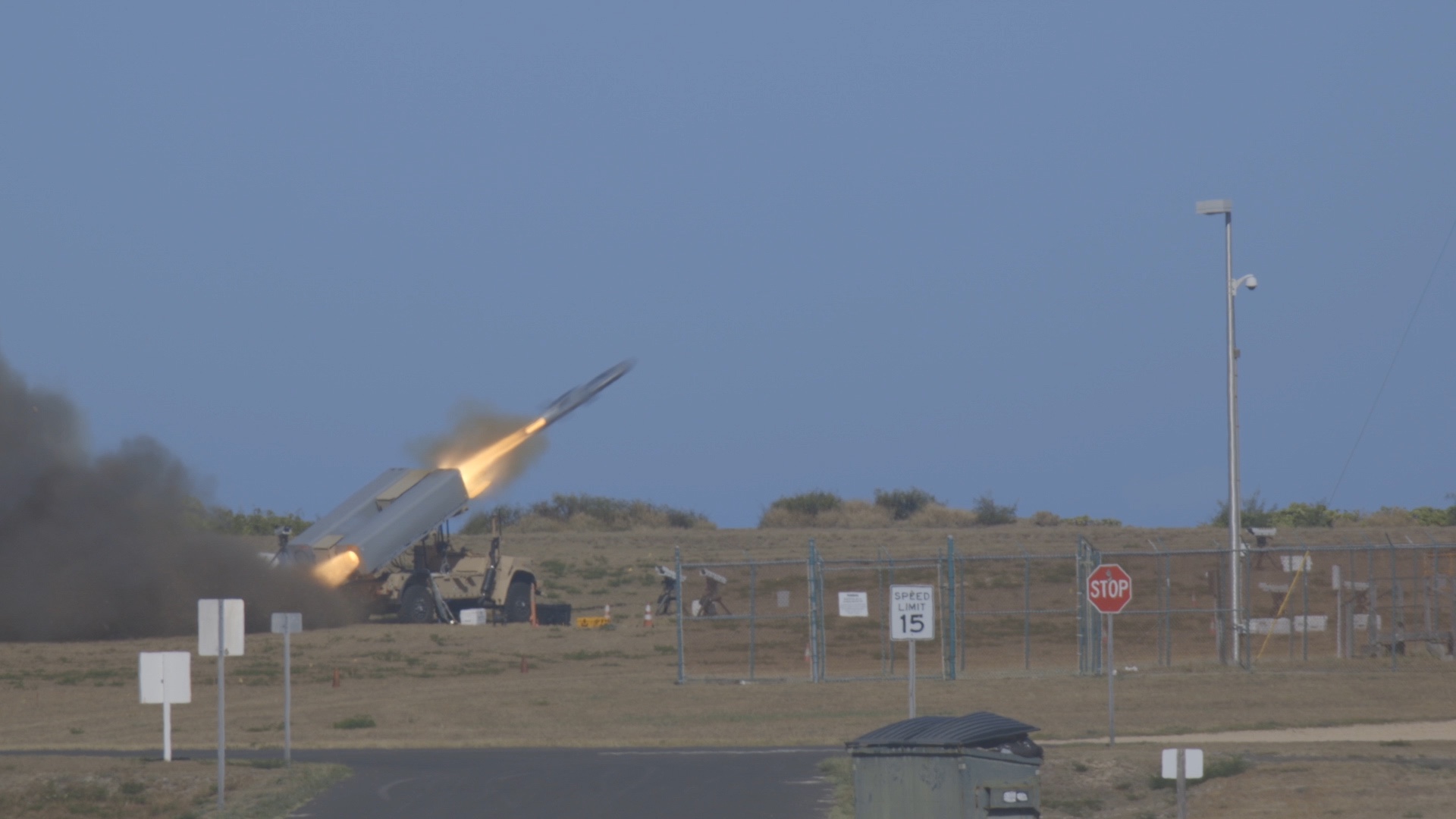
LSE 21 was a live, virtual and constructive scenario-driven, globally-integrated exercise with activities spanning 17 time zones. LSE 21 applied and assessed developmental warfighting concepts that will define how the future Navy and Marine Corps compete, respond to crises, fight and win in conflict.
The Marine Corps’ NMESIS will provide the Marine Littoral Regiment with ground based anti-ship capability to facilitate sea denial and control while persisting within the enemy’s weapons engagement-zone, and LSE 21 provided a venue for the program team to validate some of those concepts.
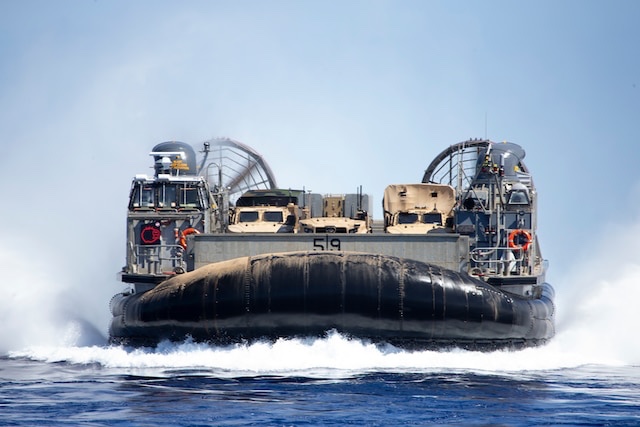
“This scenario is representative of the real-world challenges and missions the Navy and Marine Corps will be facing together in the future,” said Brig. Gen. A.J. Pasagian, commander of Marine Corps Systems Command. “This exercise also provided an opportunity for us to work alongside our service partners to refine Force Design 2030 modernization concepts.”
SINKEX, the exercise scenario involving NMESIS, provided a testing environment for new and developing technologies to connect, locate, identify, target and destroy adversary threats in all domains, culminating in the live-fire demonstration of the naval strike missile against a sea-based target. During the exercise, forward-deployed forces on expeditionary advanced bases detected and, after joint command and control collaboration with other U.S. forces, responded to a ship-based adversary. Simultaneous impacts from multiple, dispersed weapons systems and platforms across different U.S. services—including NMESIS—engaged the threat.
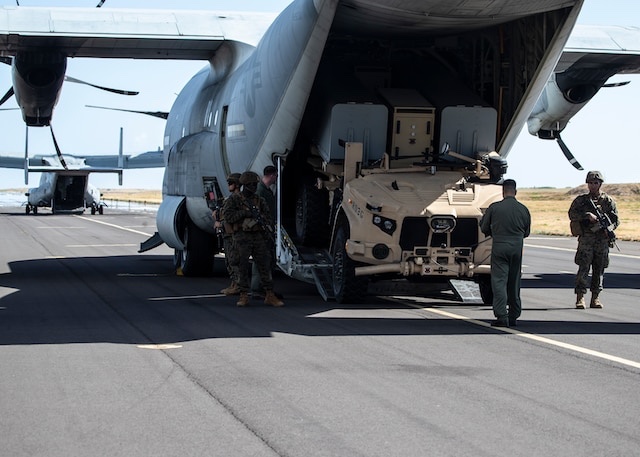
NMESIS integrates established, proven sub-systems, such as the Joint Lightweight Tactical Vehicle Chassis, the Naval Strike Missile and the Fire Control System used by the Navy for NSM.
“From an acquisition perspective, NMESIS started a little over two years ago,” said Joe McPherson, long range fires program manager at MCSC. “We’ve been able to rapidly move [on developing and fielding this system] because we’re leveraging existing NSM and JLTV subsystems.”
Because NMESIS is not yet a fielded capability, engineers from MCSC managed the fire control piece of the system during the exercise. Marines, however, were able to practice maneuvering the system and validating the system’s interoperability with their Naval and Air Force partners.
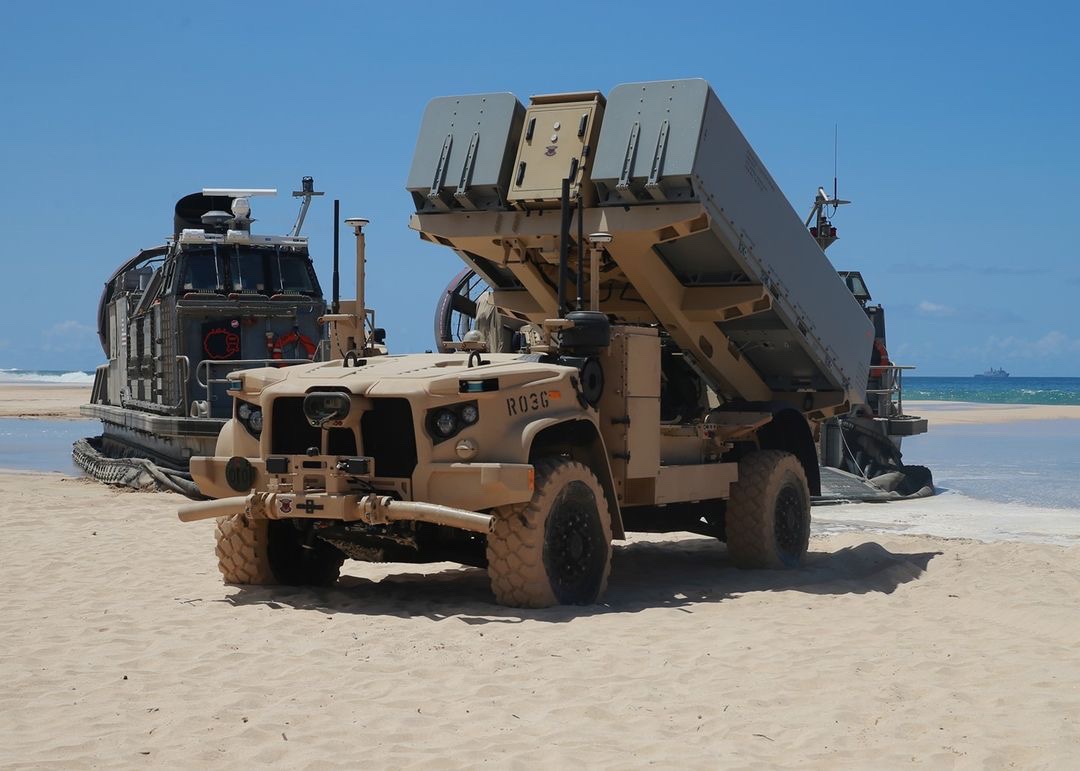
“This week was very successful,” said McPherson. “In addition to the two live fire shots that hit the target, we also successfully deployed the system aboard the Marine Corps’ primary transport systems, the C130 and LCAC.”
Though not associated with its program development, the NMESIS transportability and mobility demonstration serves an important role in developing tactics, techniques and procedures related to this critical capability, said McPherson.
MCSC is developing and fielding new anti-surface warfare weapons capabilities, including NMESIS, on pace to support Force Design 2030 objectives. These new capabilities contribute to the Fleet’s ability to achieve sea control, sea denial and defense against adversary amphibious force missions.
“This exercise gave us an opportunity to not only measure, but also validate the concepts for [the Marine Corps’] anti-ship capability, which is one of the most important avenues of the Commandant’s Force Design 2030,” said Lieutenant Col. Ryan Collins, combat integration office for artillery and fires at Marine Corps Combat Development Directorate, Combat Development and Integration. “I think the successful launches of the missile will help us clarify the path forward as we move to fulfill the Commandant’s 2030 vision, and giving the Marine Corps a transformative anti-ship capability.”
Exercises such as LSE 21 increase maritime interoperability and the ability to project American power at home and around the world.
Kelly Flynn, MCSC Office of Public Affairs and Communication
MARINE CORPS BASE QUANTICO, Va.—In July, Marine Corps Systems Command began fielding new hearing enhancement devices to support infantry Marines in various training and combat environments.
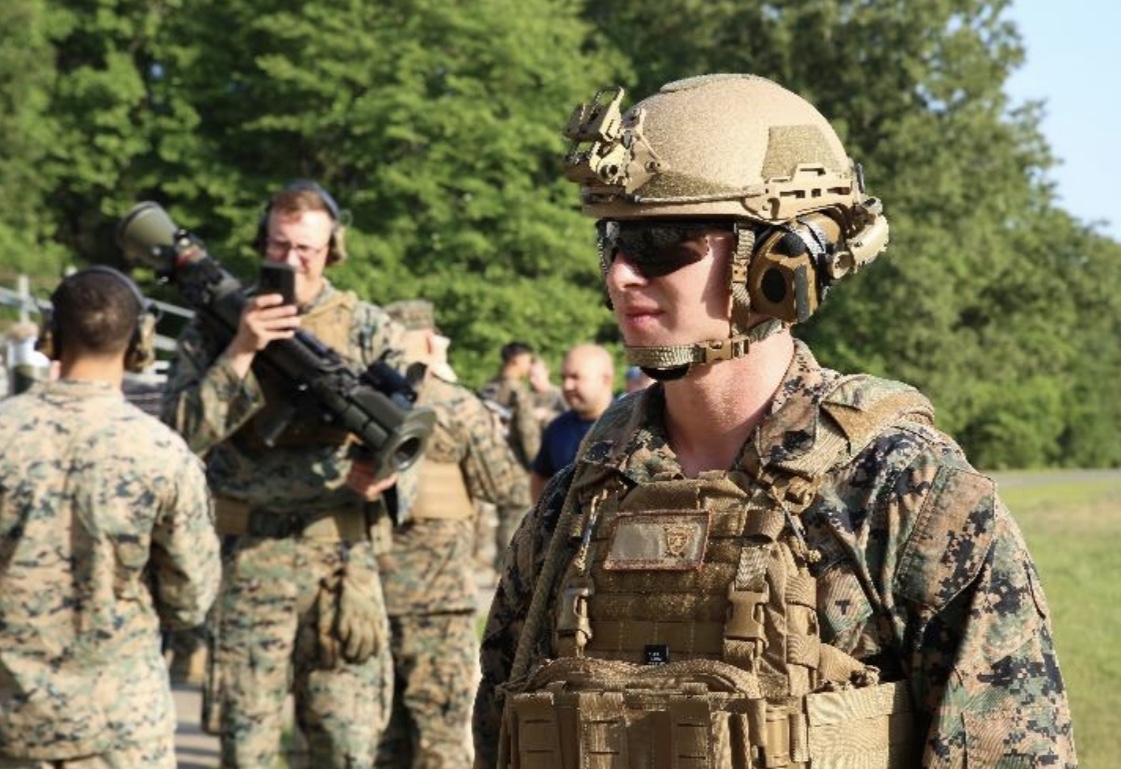
The HED protects the warfighter’s hearing and enhances voice communication in loud environments. The capability increases Marines’ situational awareness by enabling them to communicate messages more safely and efficiently during combat.
“This hearing enhancement device protects Marines from noise levels that are above safe hearing levels,” said CWO4 David Tomlinson, MCSC’s infantry weapons officer. “It also allows for sound localization, which means you can tell where a voice or noise is coming from.”
The ruggedized headset is adaptable to challenging environments ranging from the cold weather of the Sierra Nevada Mountains to the intense heat of Pacific jungles. Marines can wear the system with the Marine Corps Enhanced Combat Helmet.
MCSC is fielding both a communication-enabled and non-communication-enabled version. The non-communication version allows Marines to hear audible messages. The communication-enabled model includes a push-to-talk adapter and cables to connect to Marine Corps ground tactical radios, said Tomlinson. As a result, Marines can listen to radio transmissions even when the system is powered off.
“A major goal of this system is to increase communication in loud, noisy environments so Marines can continue to do their job,” said Tomlinson. “The hearing enhancement device supports this concept.”
The system also includes an adjustable volume option. CWO4 Mark Erhardt, infantry weapons officer with the Infantry Officers Course in Quantico, said Marines could decrease volume to better hear radio traffic or increase it for external voices nearby.
“It’s a common understanding that the battlefield is loud, and the fog of war includes many distractions,” said Erhardt. “The new hearing enhancement device will aid Marines in any situations involving sending or receiving messages, which increases overall awareness.”
Hearing protection is a pillar characteristic of the system. The HED complements the Combat Arms Earplug Generation IV—the Marine Corps’ current hearing protection system—by offering a secondary level of protection to further avoid hearing damage.
The HED comprises a setting for inner ear protection, which assists in maintaining device quality and capability. Marines can use this setting in situations where noise levels exceed a certain threshold, said Tomlinson.
Previously, Marines commonly used foam earplugs to block noise and protect their hearing on the battlefield. Tomlinson said the plugs sufficiently reduced noise decibels heard by Marines but did not allow them to vocalize messages to one another.
“Traditional earplugs block all noise, where this new system filters noise and still allows for situational awareness,” said Tomlinson. “Marines receiving the new HED have never had a capability like this before.”
Story by Marine Corps Systems Command Office of Public Affairs & Communication
U.S. Marine Corps photo by Tonya Smith
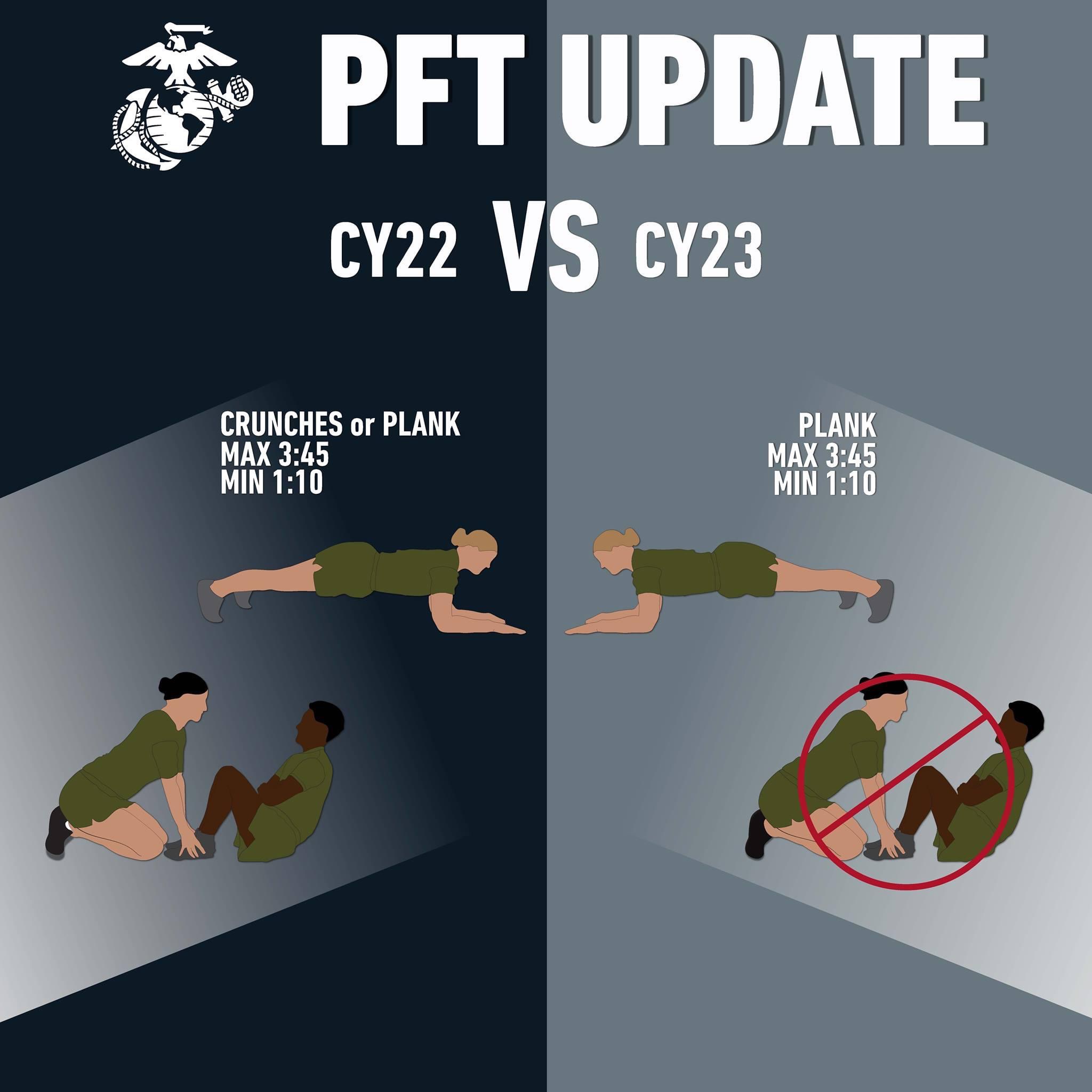
In 2020, the Marine Corps adopted the plank as an alternative to crunches for the annual Physical Fitness Test (PFT) as a means to measure core stability, strength, and endurance while reducing risk of injury. For PFTs conducted in 2022, Marines will still have the option to conduct the plank or the crunch just as in 2021, with slight scoring adjustments. The plank will be mandatory in 2023, replacing the crunches as an authorized PFT exercise.
For decades, the Marine Corps has used sit-ups and crunches to both improve and assess abdominal endurance. However, research has shown that sit-ups and crunches with the feet restrained require significant hip flexor activation. This has been linked to an increased risk of injury, including lower back pain due to increased lumbar lordosis.
The plank presents numerous advantages as an abdominal exercise. The plank’s isometric hold requires constant muscle activation, activates almost twice as many muscles as the crunch, and has been proven to be most reliable in measuring the true endurance required for daily activity function. With increased core strength, Marines are less likely to experience injury or fatigue during functional tasks like hiking, lifting and low crawling.
The new time for the maximum score will 3:45, reduced from 4:20. The time for the minimum score has also been adjusted, increasing from 1:03 to 1:10.
For more information and resources, including a four-week core strength training plan, visit www.fitness.marines.mil and reference MARADMIN 404/21 at www.marines.mil/News/Messages/Messages-Display/Article/2719680/forthcoming-changes-to-the-physical-fitness-test.
Direct link to the Plank Progression Program: www.fitness.marines.mil/Portals/211/Cache/Plank%20Progression_Wk1-Wk4
U.S. Marines with 1st Battalion, 2d Marine Regiment (1/2), 2d Marine Division, conduct Electronic Warfare Operations at Camp Lejeune, N.C., July 14, 2021. 1/2 is tasked as the 2d MARDIV’s experimental infantry battalion to test new gear, operating concepts and force structures. The unit’s findings will help refine infantry battalions across the Marine Corps as it continues to push toward the end state of Force Design 2030. (U.S. Marine Corps video by Cpl Noah J. Ralphs)
DUGWAY PROVING GROUND, Utah — Soldiers from Fort Drum and Joint Base Lewis-McChord teamed with Marines from Camp Pendleton to test new tactical biological detection and chemical contamination indicator systems here.
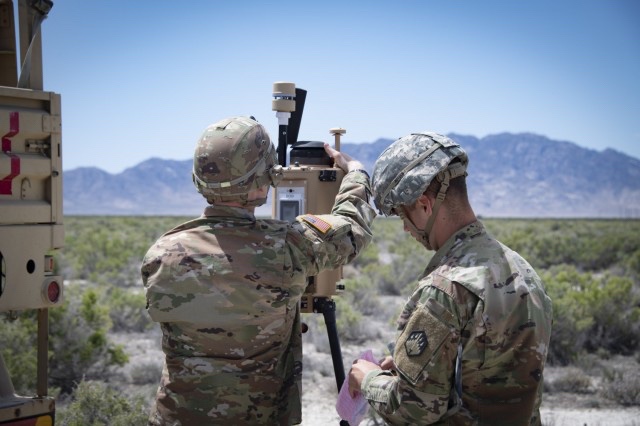
Soldiers with the 59th Hazard Response Company and 13th Combat Sustainment Support Battalion along with Marines from the 3rd Marine Air Wing went hands-on with the Joint Biological Tactical Detection System (JBTDS) and the Contamination Indication Disclosure Assurance System (CIDAS), which indicates on chemical agent contaminants so decontamination can take place.
“These two operational tests have given my company the opportunity to focus on our critical war-time collective tasks of site assessment and decontamination and refine our tactics, techniques, and procedures,” said Capt. Ryan Oatman, company commander of 59th Chemical, Biological, Radiological and Nuclear (CBRN) Hazard Response Company.
“The training benefit while conducting these operational tests to my unit’s operational readiness makes this tasking to support new materiel development a win-win.”
According to Test Officer Mr. Josh Smith of the U.S. Army Operational Test Command’s Maneuver Support and Sustainment Test Directorate, test data collected will be used to inform senior Army and Joint Service leaders on how effective, suitable, and reliable the JBTDS and CIDAS systems will be during real-world operations.
“Working with a test unit that is excited about and embraces the opportunity to train its Soldiers while providing valuable feedback on potentially new CBRN materiel solutions with considerations for its employment makes the hard work of operational testing worth it,” Smith said.
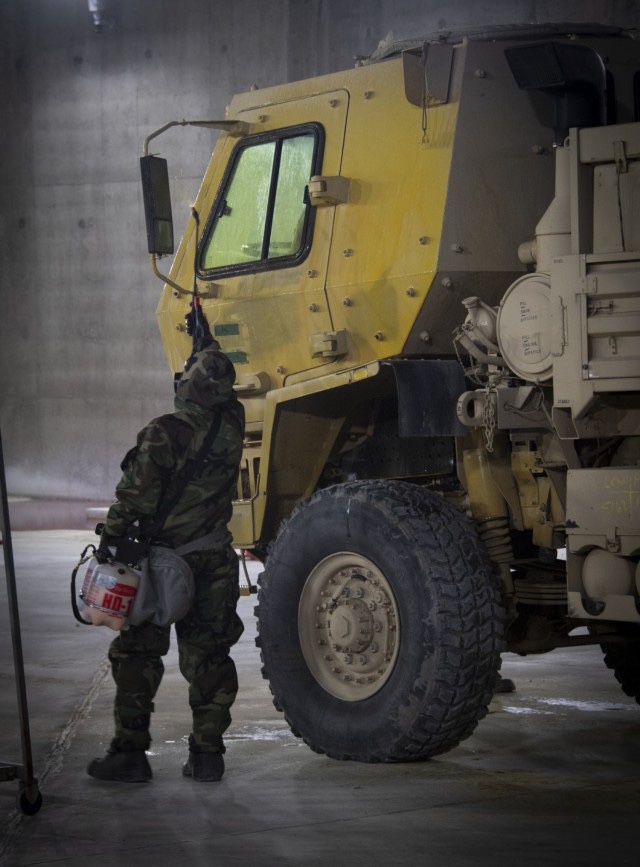
Smith explained the units will have employed the JBTDS and CIDAS systems during replicated security and sustainment operations through multiple days of tough, realistic training in the harsh Dugway Proving Ground environment.
“Since operational testing is about Soldiers and unit missions,” he said, “this test event is about making sure the systems developed are — and remain effective — in a Soldier’s hands and suitable for the environments in which Soldiers and units train and fight.”
By Mr. Edward M. Jagodzinski, Test Officer, Maneuver Support and Sustainment Test Directorate, U.S. Army Operational Test Command
Marine Corps Tactical Systems Support Activity hosted a team of design experts who tested the network connectivity of the portable expeditionary fabrication lab, otherwise known as XFAB, on Camp Pendleton, April 5-9, 2021.

The XFAB is a self-contained, transportable additive manufacturing lab that can deploy with battalion-level Marine maintenance units. The 20-by-20-foot shelter is collapsible for easier transport and houses five 3D printers, a laser scanner, a laser cutter and a computer design software system that enables Marines to fabricate replacement and repair parts in an expeditionary environment.
“MCTSSA offers a great opportunity to exercise the XFAB on the [Marine Corps Enterprise Network] and capture the messaging traffic and data packing messages in real time,” said Robert Davies, project officer for Fabrication Equipment under the Program Manager for Supply and Maintenance Systems at Marine Corps Systems Command. “The test directors and support staff at MCTSSA were a pleasure to work with.”
The goal of the testing event was to evaluate the connectivity of the Marine Corps’ closed computer network to determine if any adjustments are needed before reaching final operational capability and delivering labs to the Fleet Marine Forces in June 2022.
XFAB has been in development stages for approximately five years. It is designed to provide Marines a way to innovate by creating their own manufacturing tools, parts and signage. This unique capability can be employed in forward-deployed locations when specialty and hard-to-find parts are not readily available.
“MCTSSA is a great place for this kind of testing and demonstration,” said Lt. Col. Michael Liguori, commanding officer of MCTSSA. “Our location makes it easy for fleet units to visit and see the layout of the equipment first-hand. We’re proud to support the Supply and Maintenance Systems program manager and their team as they move closer to fielding this new capability to the operational forces.”
Impact and Implementation
Each lab comes equipped with two Lulzbot TAZ Workhorse 3D Printers, two Markforged X7 3D printers, one 3D Platform 3000 Series Printer, and one Epilog Fusion Pro 32 Laser Cutter and a Quantum FAROArm S 3D laser scanner. The XFAB also comes standard with three laptops, two workstations and one 55-foot LED television screen.
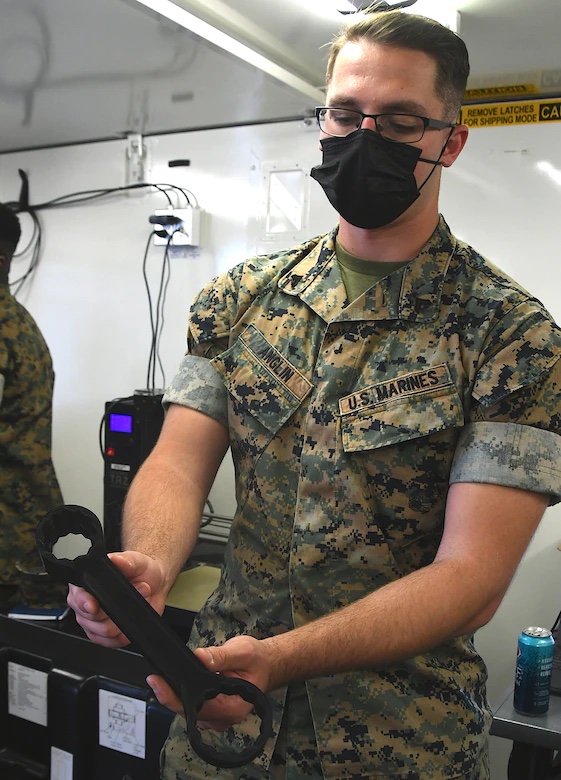
When integrated into a Marine Expeditionary Force, the XFAB will reduce the maintenance battalion’s logistics footprint by eliminating the need to transport large amounts of spare parts.
“As this technology and overall asset is brand new to the FMF, the maintenance community is extremely excited to receive their assets and begin use of the 3D scanning and printing capabilities,” said Davies. “While some FMF units have 3D printers, those assets were procured with unit funds.”
The XFAB capability is an MCSC Program of Record and will be a supported asset in the fleet, which will make integration for deployments much easier, Davies said.
Demo Days
During the testing event at MCTSSA in early April, senior leaders and Marines from 1st Marine Logistics Group, 1st Light Armored Reconnaissance Regiment, 3rd Amphibious Assault Battalion and 3rd Marine Aircraft Wing got a first-hand look at the equipment and how they can manufacture parts and products.
The XFAB container runs on generator or shore power, and takes a team of four Marines two-to-three hours to set up and tear down. It weighs about 10,500 pounds fully equipped and can be transported via the Logistics Vehicle System Replacement or a commercial flatbed truck.
A New Tool in the Tool kit for FMF
By design, the XFAB and its components are to be operated by a Marine Machinist (MOS 2161) as their primary duties include support of unit maintenance to include fabrication, repair or modification of equipment. However, the XFAB is composed of several workstations that would require just one Marine to be present to operate the equipment and tools.
Several items can be printed and manufactured, including the detonation cord connector, SABER handgrip removal tool, radio handset covers, M320 hammer strut tool, reinforced high-mobility multipurpose wheeled vehicle door handles and a universal load stud wrench for use with all generators.
“Due to the solid MCEN design from our supporting establishments, Naval Surface Warfare Center Crane and Carderock, we have had no redesign efforts required and have passed all testing while at MCTSSA with no outstanding issues to resolve,” Davies added.
A future design is under development with a more tactical version of XFAB called Tactical Fabrication and will soon approach its fielding decision, Davies added. This system will be slightly limited in capability but will be modular, stored in pelican cases, and is specific to a particular MOS.
The current requirement is to deliver 21 XFAB units. II Marine Expeditionary Force is scheduled to receive the first one sometime in mid-2022.
By Amy Forsythe, Public Affairs Officer, MCTSSA